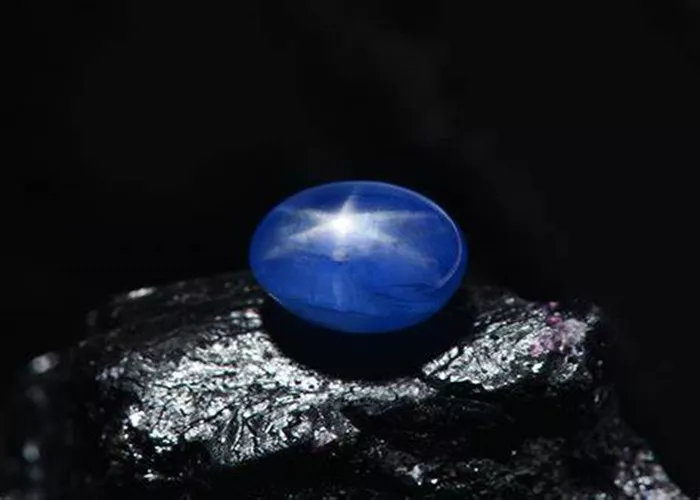Star sapphires are one of nature’s most enchanting gemstones. Their unique optical phenomenon, known as asterism, creates a star-like pattern on their surface when light hits them at certain angles. This captivating effect has fascinated gem enthusiasts and collectors for centuries. In this article, we will explore the formation of star sapphires, the science behind their asterism, their geological origins, and their significance in the world of gemstones.
Understanding Sapphire
What is Sapphire?
Sapphire is a variety of the mineral corundum, which is composed of aluminum oxide (Al₂O₃). While most people associate sapphires with the color blue, they can actually occur in a wide range of colors, including yellow, pink, green, and even colorless. The presence of trace elements in the corundum structure gives sapphires their various hues. For example, iron and titanium can produce blue sapphires, while chromium is responsible for pink ones.
The Gemstone Market
Sapphires are highly valued in the gemstone market. They are second only to diamonds in hardness, scoring a 9 on the Mohs scale. This durability makes them ideal for everyday wear, particularly in engagement rings and other types of jewelry. Star sapphires, in particular, hold a special place in the hearts of collectors and jewelers alike due to their unique visual properties.
The Formation of Star Sapphire
Geological Origins
Star sapphires are formed deep within the Earth’s crust under high-pressure and high-temperature conditions. The process begins with the crystallization of aluminum oxide in metamorphic rocks. The presence of certain trace elements, particularly iron and titanium, plays a critical role in determining the color and quality of the sapphire.
The Role of Rutile
One of the key components in the formation of star sapphires is a mineral called rutile. Rutile is composed of titanium dioxide (TiO₂) and is often found in the same geological environments as sapphires. When sapphires crystallize, needle-like inclusions of rutile can become trapped within the stone. These inclusions are what create the star effect when light interacts with the stone.
Asterism Explained
Asterism is the optical phenomenon that gives star sapphires their distinctive appearance. This effect is produced when light reflects off the rutile inclusions within the sapphire. The inclusions typically align in a specific orientation, often in a three-rayed or six-rayed star pattern. When light hits the surface of the stone, it reflects off these inclusions, creating the star effect that moves as the stone is turned.
The Importance of Cut
The way a star sapphire is cut is crucial to displaying its asterism. The best cuts for showcasing the star effect are cabochon cuts, which have a smooth, rounded surface. This cut allows light to interact with the rutile inclusions effectively, enhancing the visibility of the star pattern. A well-cut star sapphire will display a clear, centered star that is easily visible from multiple angles.
Types of Star Sapphire
Blue Star Sapphire
The most common and sought-after variety of star sapphire is the blue star sapphire. This type exhibits a deep blue color, often enhanced by the presence of iron and titanium. The star pattern on blue sapphires is typically white or silver, creating a striking contrast against the rich blue background.
Color-Change Star Sapphire
Color-change star sapphires are a rare variety that exhibits different colors under varying lighting conditions. For example, a stone may appear blue in daylight and shift to a purplish hue under incandescent light. This phenomenon is due to the unique way light interacts with the mineral’s internal structure and inclusions.
Fancy Color Star Sapphire
Fancy color star sapphires come in a variety of hues, including pink, yellow, and green. These sapphires are less common than blue star sapphires and can be highly prized by collectors. The asterism in fancy color star sapphires can also vary, with some displaying more pronounced stars than others.
The Significance of Star Sapphire
Cultural and Historical Importance
Star sapphires have held cultural significance in various societies throughout history. In ancient times, they were believed to possess protective qualities and were often worn by royalty. The star pattern was thought to symbolize the divine and was associated with good fortune.
Modern Usage
Today, star sapphires are popular in both fine jewelry and fashion accessories. They are often set in rings, pendants, and earrings, and their unique appearance makes them a favorite among collectors. Additionally, star sapphires are sometimes used in alternative healing practices, where they are believed to promote clarity and wisdom.
Care and Maintenance
Cleaning Star Sapphires
Caring for star sapphires involves regular cleaning to maintain their luster. It is recommended to use a soft cloth and mild soap with warm water for cleaning. Avoid harsh chemicals and ultrasonic cleaners, as they can damage the stone.
Storage
Proper storage is essential to prevent scratches and damage. Star sapphires should be stored separately from other gemstones, preferably in a soft pouch or a lined jewelry box. This helps protect them from potential scratches caused by harder stones.
Conclusion
Star sapphires are a remarkable example of nature’s artistry. Their unique formation process, combined with the stunning optical phenomenon of asterism, makes them a sought-after gemstone in the jewelry world. Understanding what causes star sapphire enhances our appreciation for these beautiful stones and their place in both history and modern culture. Whether worn as a piece of jewelry or collected as a rare specimen, star sapphires continue to captivate and inspire.
Related topic:
- What Is the Historical Background of Cartier’s Yellow Sapphire Ring?
- How Stable is the Color of Casiot Yellow Sapphire?
- What Are the Maintenance Methods of Caxiate Yellow Sapphire?


